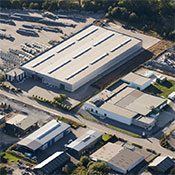
With the right business problem, data, and applied techniques predictive analytics can deliver exceptional return on investment (ROI) by, for example, assessing and managing risk, detecting and preventing fraud, optimizing workflow and business processes, and prioritizing resources. Predictive analytics provides business leaders with data-driven insight to determine which customers to contact for marketing, which tax returns to audit, which debtors to approve for increased credit limits, which patients to clinically screen, which customers are likely to leave, which persons of interest to investigate, and which equipment to inspect for impending failure.
If your organization is new to predictive analytics, it can be difficult to know where to start. We have found that there is often a mismatch between what companies think they should do with analytics versus what will provide the most value. There is no “easy button” for achieving value through analytics and it is difficult to determine specific ROI at the onset of an analytics project. However, it is often possible to realize return on analytics investment in the range of 10x to 100x or higher. Some examples across varied industry sectors are:
Detecting Fraud, Waste, or Abuse in Healthcare
 Investigating providers suspected of billing for fraudulent procedures can be a costly and time-consuming process, since there are relatively few bad actors. Our client estimated they had a global rate of provider fraud of 5 percent. To optimize resource utilization, it was critical to focus investigations on the providers most likely to be fraudulent or non-compliant. Elder Research developed a predictive model that scored and ranked cases by risk to generate leads for investigators with the highest potential for return on investment.
Investigating providers suspected of billing for fraudulent procedures can be a costly and time-consuming process, since there are relatively few bad actors. Our client estimated they had a global rate of provider fraud of 5 percent. To optimize resource utilization, it was critical to focus investigations on the providers most likely to be fraudulent or non-compliant. Elder Research developed a predictive model that scored and ranked cases by risk to generate leads for investigators with the highest potential for return on investment.
Results: The model increased the fraud detection rate from 5% to 48% for the top 50 riskiest providers identified by the model, dramatically increasing efficiency of their investigative resources.
Improving Credit Risk Scoring in Retail Banking
 The client’s model had been developed and deployed by many dozens of expert statisticians over many years. However, it had stayed within a “tried and true” logistic regression framework, and the client was interested (though pessimistic) in whether any new insights would be produced by using modern data mining techniques. Elder Research applied expertise in machine learning, statistics, data mining, model testing strategies, and model ensembles to produce a more effective model.
The client’s model had been developed and deployed by many dozens of expert statisticians over many years. However, it had stayed within a “tried and true” logistic regression framework, and the client was interested (though pessimistic) in whether any new insights would be produced by using modern data mining techniques. Elder Research applied expertise in machine learning, statistics, data mining, model testing strategies, and model ensembles to produce a more effective model.
Results: The new model ensemble reduced the number of credit card accounts that defaulted on the client’s evaluation dataset by more than 10% when compared to their world-class baseline model.
Prioritizing Building Lease Renewals for a Government Agency
 The Postal Service owned and leased more than 33,000 facilities that encompassed over 285 million interior square feet. Over recent years there has been a significant decline in workload, raising the question of whether the building inventory was optimized and if all 33,000 facilities were still necessary for operations. Elder Research built a predictive model to prioritize lease renewal review by predicting future interior needs, comparing market values, and identifying fraudulent lessors.
The Postal Service owned and leased more than 33,000 facilities that encompassed over 285 million interior square feet. Over recent years there has been a significant decline in workload, raising the question of whether the building inventory was optimized and if all 33,000 facilities were still necessary for operations. Elder Research built a predictive model to prioritize lease renewal review by predicting future interior needs, comparing market values, and identifying fraudulent lessors.
Results: The model focused auditors on leases with highest risk and potential savings. Projected savings was $99 million over 5 years.
Automating Demand Forecasting in Logistics
 Logistics is a mature, technologically-advanced, and analytically-sophisticated industry. Still, even after decades of improvements coming from the Industrial Engineering and Operations Research fields, major efficiencies can still be realized by applying advanced analytics, data infrastructure, and computing power. All business processes in logistics rely on accurate demand forecasting in the short, medium, and long-term to inform resourcing, planning, and staffing to support future needs. In three weeks we delivered a functioning production time-series forecasting framework using R and Spark. After six months we had scaled to a refined framework that produces timely forecasts on over several thousand locations in our client’s network.
Logistics is a mature, technologically-advanced, and analytically-sophisticated industry. Still, even after decades of improvements coming from the Industrial Engineering and Operations Research fields, major efficiencies can still be realized by applying advanced analytics, data infrastructure, and computing power. All business processes in logistics rely on accurate demand forecasting in the short, medium, and long-term to inform resourcing, planning, and staffing to support future needs. In three weeks we delivered a functioning production time-series forecasting framework using R and Spark. After six months we had scaled to a refined framework that produces timely forecasts on over several thousand locations in our client’s network.
Results: Flexible/extensible production scale solution delivering 35 million forecasts in under an hour with median accuracy of 88% four weeks out.
Improving Customer Retention in Telecommunications
 Competition in the wireless telecommunications industry is intense. To maintain profitability, wireless carriers must control churn, or the loss of subscribers to other carriers. Churn had caused nTelos’s market share and profitability to decline dramatically. nTelos hired Elder Research to help identify the causes of its high churn and implement actions to reduce it. By applying advanced techniques for modeling and visualizing customer records, we created a combined data and text mining solution to increase marketing efficiency and reduce churn.
Competition in the wireless telecommunications industry is intense. To maintain profitability, wireless carriers must control churn, or the loss of subscribers to other carriers. Churn had caused nTelos’s market share and profitability to decline dramatically. nTelos hired Elder Research to help identify the causes of its high churn and implement actions to reduce it. By applying advanced techniques for modeling and visualizing customer records, we created a combined data and text mining solution to increase marketing efficiency and reduce churn.
Results: The model improved targeted messages which decreased nTelos’s churn from 3.5 percent to 2.9 percent and boosted annual profits by an estimated $1+ million.
Enhancing Customer Loyalty in Retail
 Loyalty Department of a large industry-leading computer technology provider wanted to increase total lifetime value of customers and strengthen the re-seller program. Elder Research collaborated with the client to create an automated evaluation of the loyalty program’s impact on customer lifetime value, retention, and market share. The solution used advanced analytics to segment customers, determine loyalty metrics, and design and deliver summary reports with actionable program insight. We designed and measured targeted marketing campaigns for the client’s most important customer base to focus marketing resources on campaigns that were the most effective.
Loyalty Department of a large industry-leading computer technology provider wanted to increase total lifetime value of customers and strengthen the re-seller program. Elder Research collaborated with the client to create an automated evaluation of the loyalty program’s impact on customer lifetime value, retention, and market share. The solution used advanced analytics to segment customers, determine loyalty metrics, and design and deliver summary reports with actionable program insight. We designed and measured targeted marketing campaigns for the client’s most important customer base to focus marketing resources on campaigns that were the most effective.
Results: The enhanced loyalty rewards program contributed to a 35% increase in program enrollment contributing more than $600 million in increased sales over five years.
Reducing Fraud at the U.S. Postal Service
 The US Postal Service Office of Inspector General (USPS-OIG) wanted a more efficient and actionable way to target questionable contracts and healthcare claims in order to eliminate fraud, waste, and abuse. Elder Research partnered with the USPS OIG to customize a solution to help the agency generate investigative leads based on risk indicators and anomaly detection. RADR, a custom tool combining sophisticated predictive analytics with an intuitive, user friendly interface was deployed to help auditors and investigators identify high-risk cases.
The US Postal Service Office of Inspector General (USPS-OIG) wanted a more efficient and actionable way to target questionable contracts and healthcare claims in order to eliminate fraud, waste, and abuse. Elder Research partnered with the USPS OIG to customize a solution to help the agency generate investigative leads based on risk indicators and anomaly detection. RADR, a custom tool combining sophisticated predictive analytics with an intuitive, user friendly interface was deployed to help auditors and investigators identify high-risk cases.
Results: Leads generated by the contract fraud model proved to be 74% actionable; 23 out of 31 highest scored contracts showed evidence of fraud, waste, and abuse. The healthcare model results aided in over $11 million in recoveries, restitutions, and cost avoidance in the first year, reduced the number of hours spent on a case by 30%, and increased the dollars returned per case by 35%.
As Dr. John Elder stated in a previous blog on this topic, “the hype around Artificial Intelligence, Machine Learning, and Data Science is enormous, so it’s tempting to be skeptical of the return on investment (ROI) claimed. Still, most of the results are real. Organizations may suspect there is value in their data assets but not be sure how to extract it, what it will cost, or most importantly, if their ROI in analytics will be worthwhile.”
However, according to an analysis by Nucleus Research, “return on investment for analytics and business intelligence solutions is increasing and currently delivering on average $13.01 for every dollar spent—a whopping 1301% ROI. Nucleus findings indicate organizations are indeed continuing to make investments in analytics, particularly to meet the growing demand for more robust and user-friendlier applications that easily tie into other core systems. Customers investing in new analytics solutions today are looking for improved decision-making capabilities that overcome past issues with data quality and time constraints to meet business demand in competitive markets.”
Data Science is powerful and proven. As shown in our examples above, companies in vastly different fields are achieving huge gains by extracting useful information from their data. But data science is a success only if the results are used to improve decision-making. The path to success involves clear thinking, the right data science technology, trust, and a willingness and ability for the organization to change.
